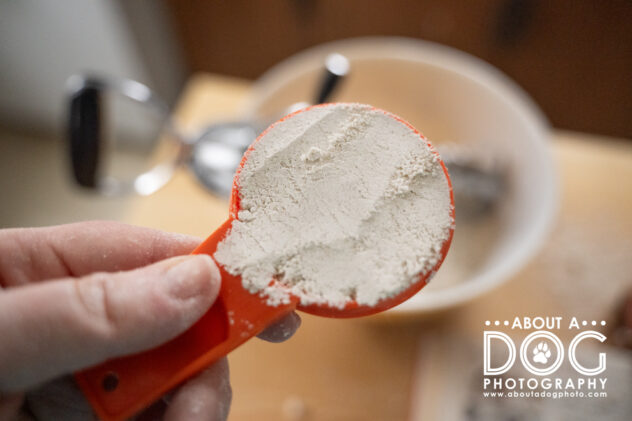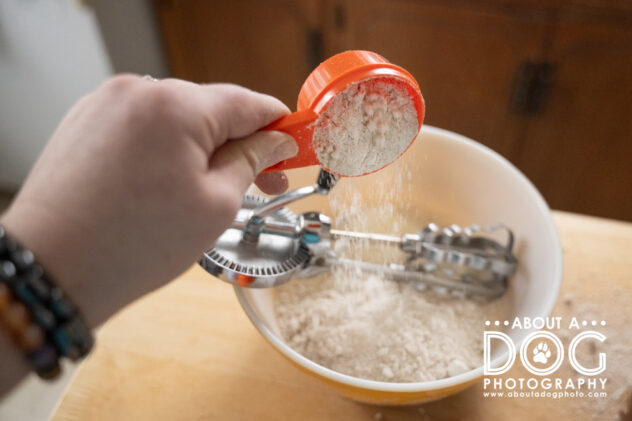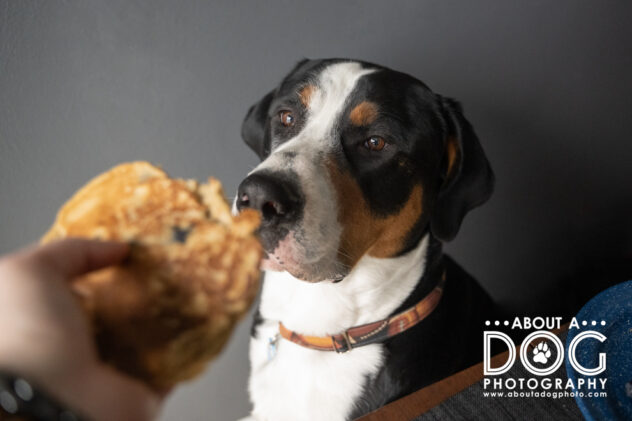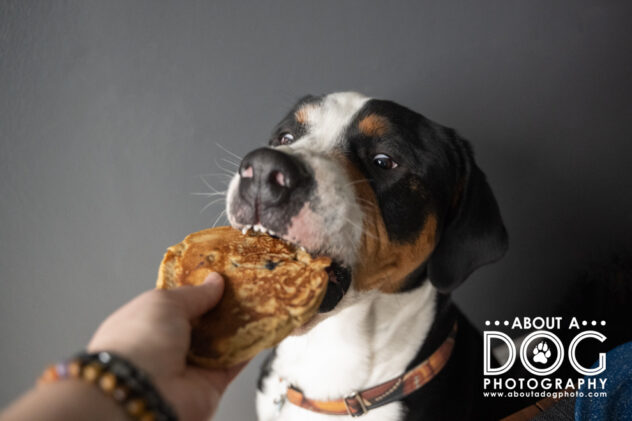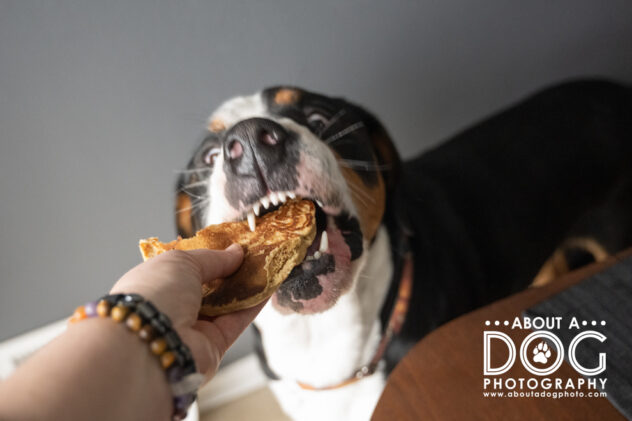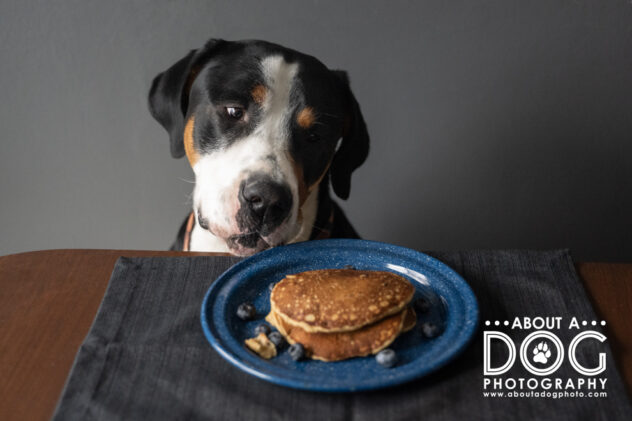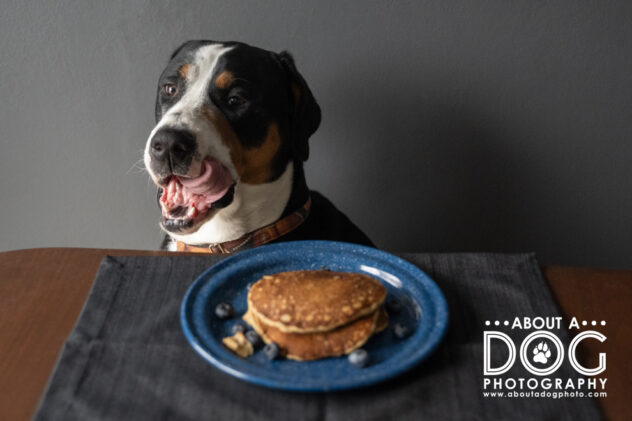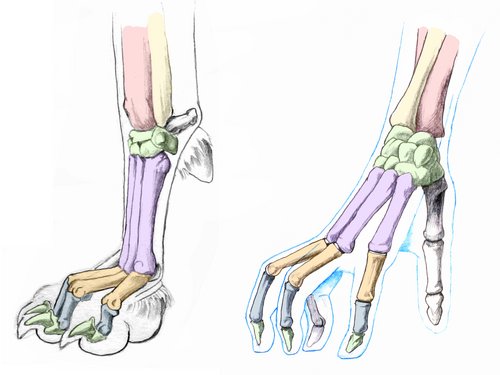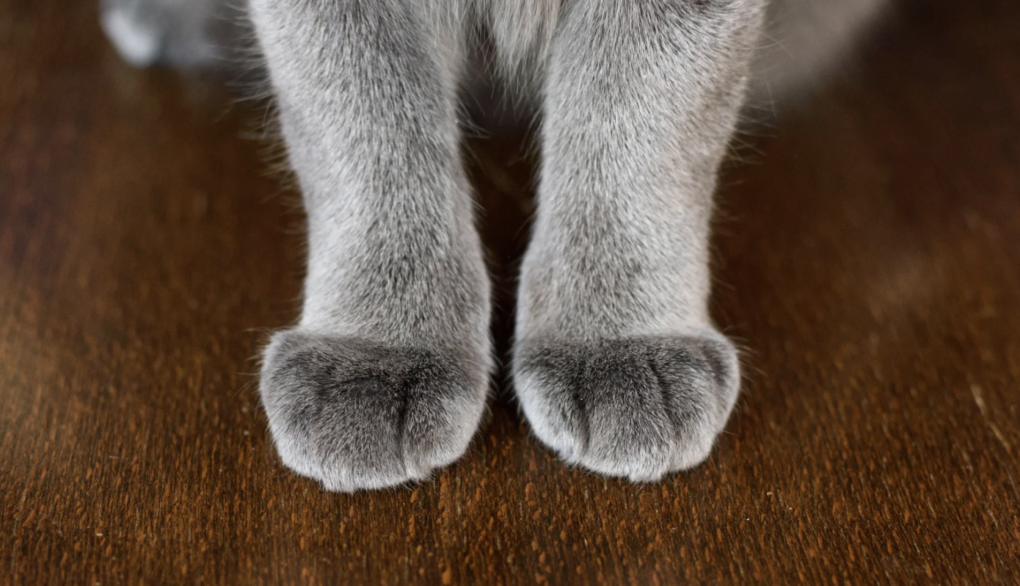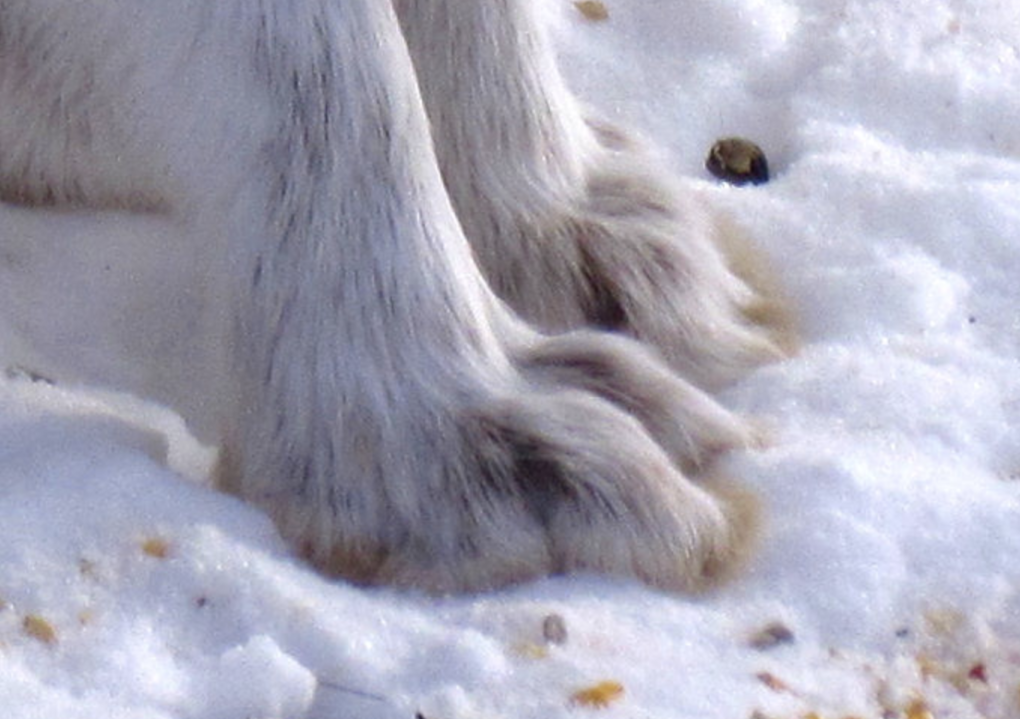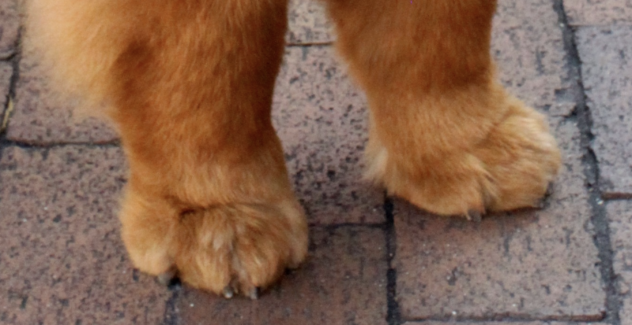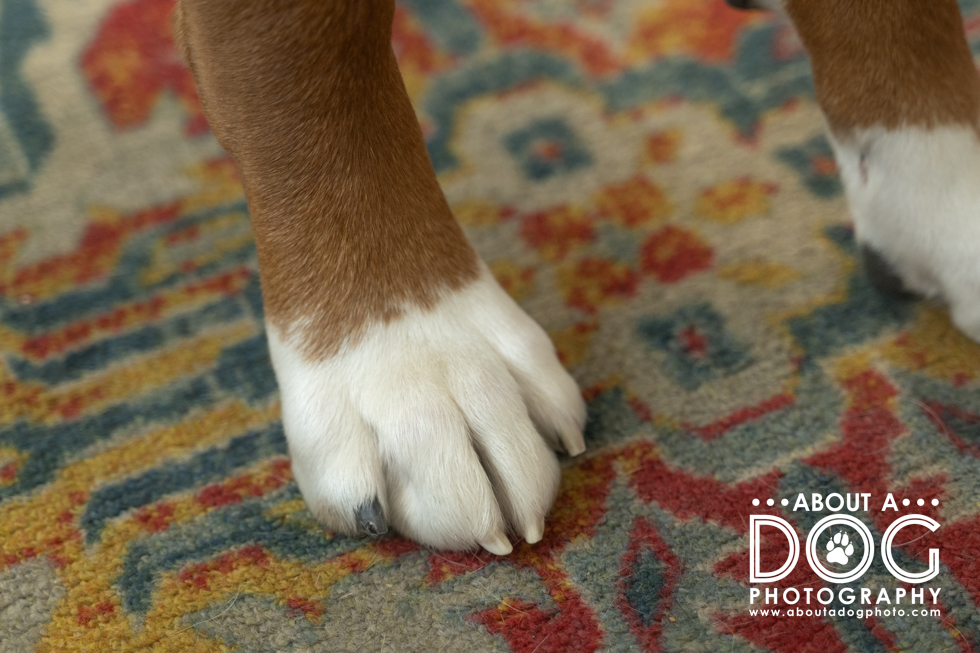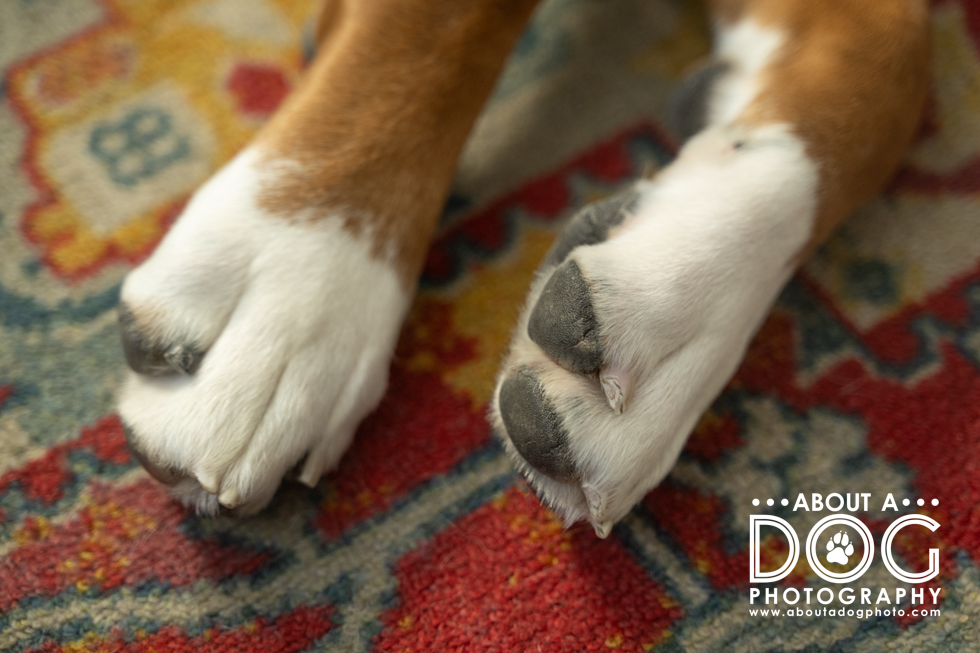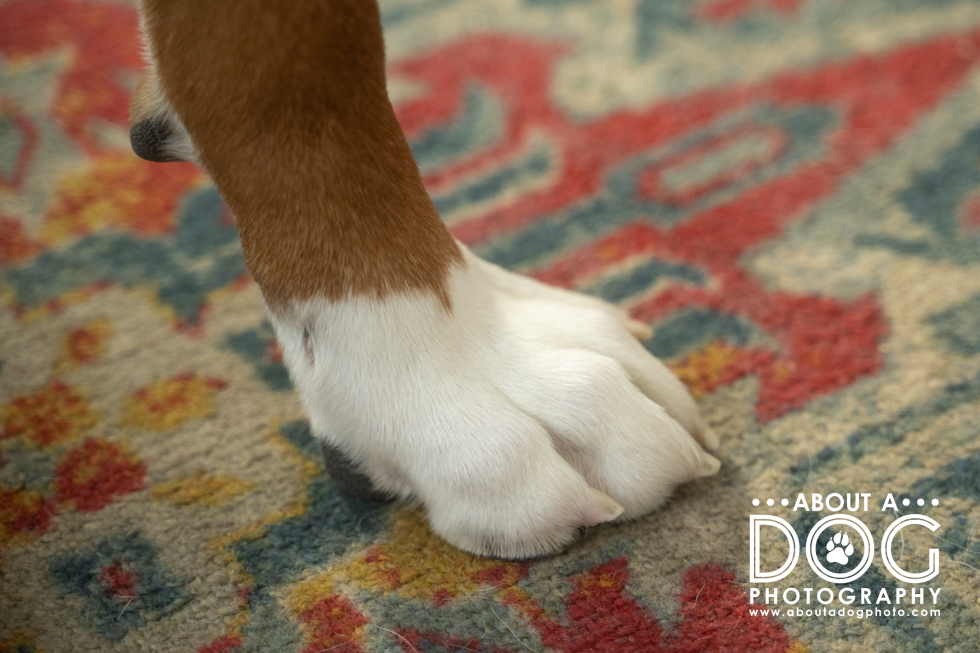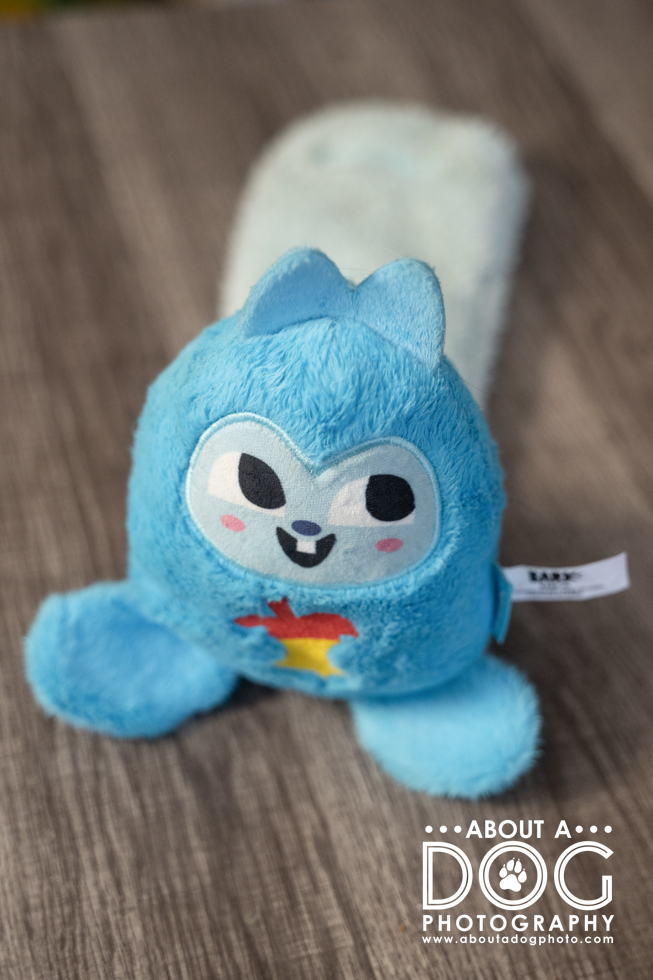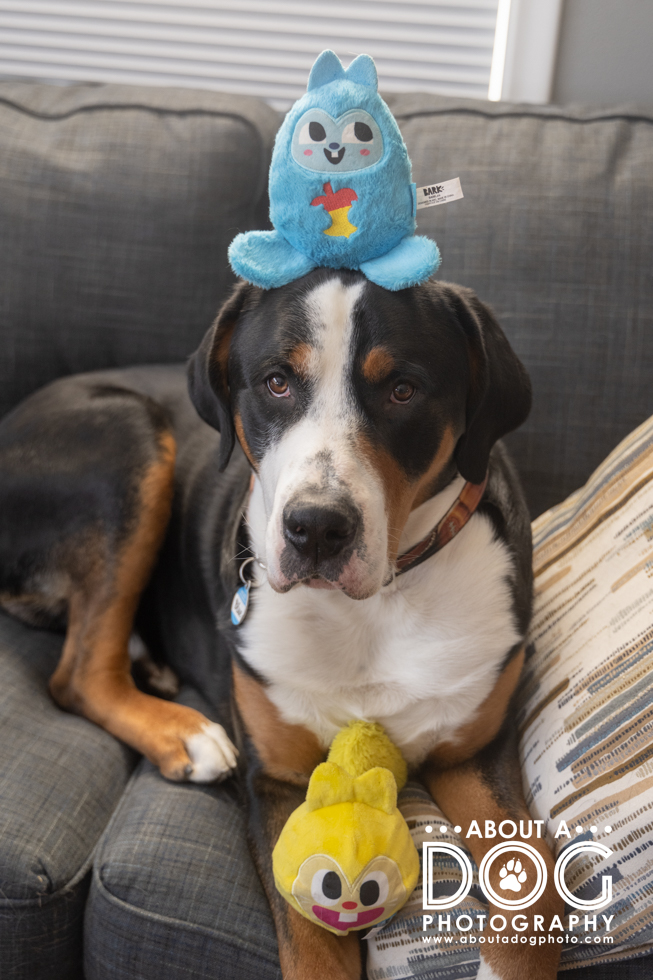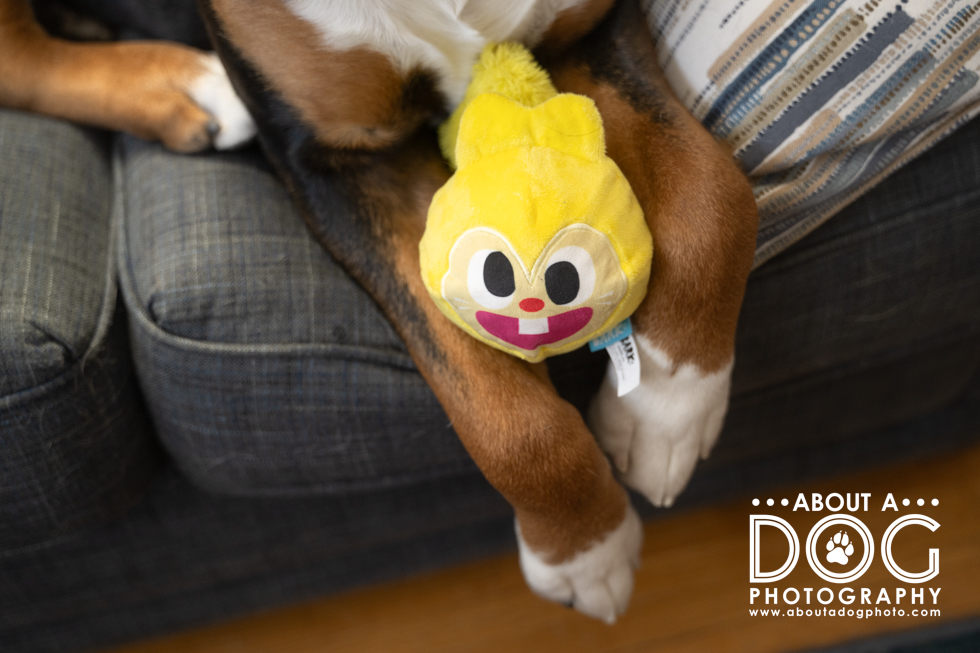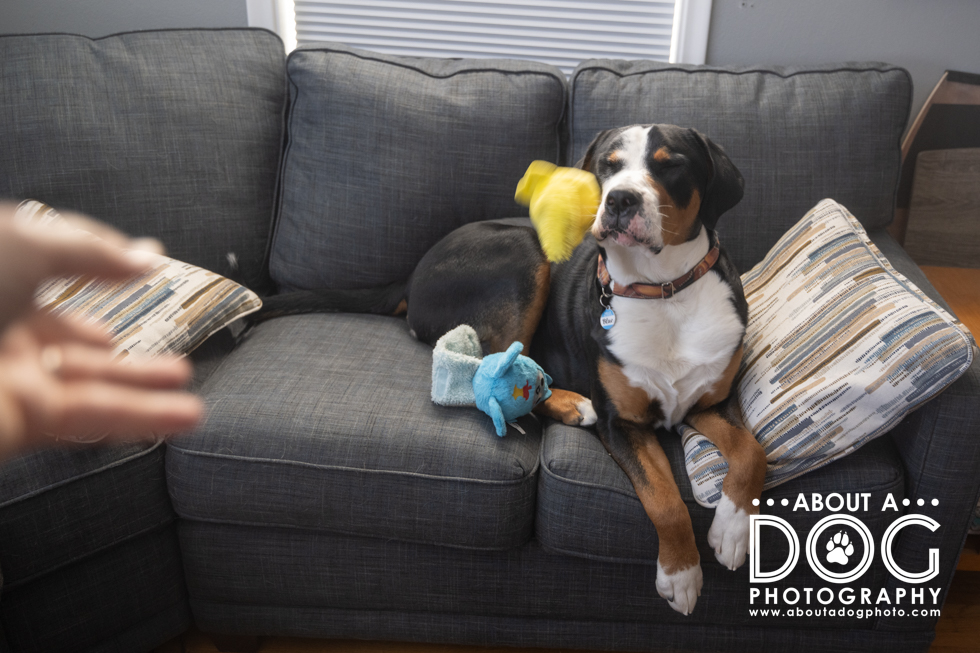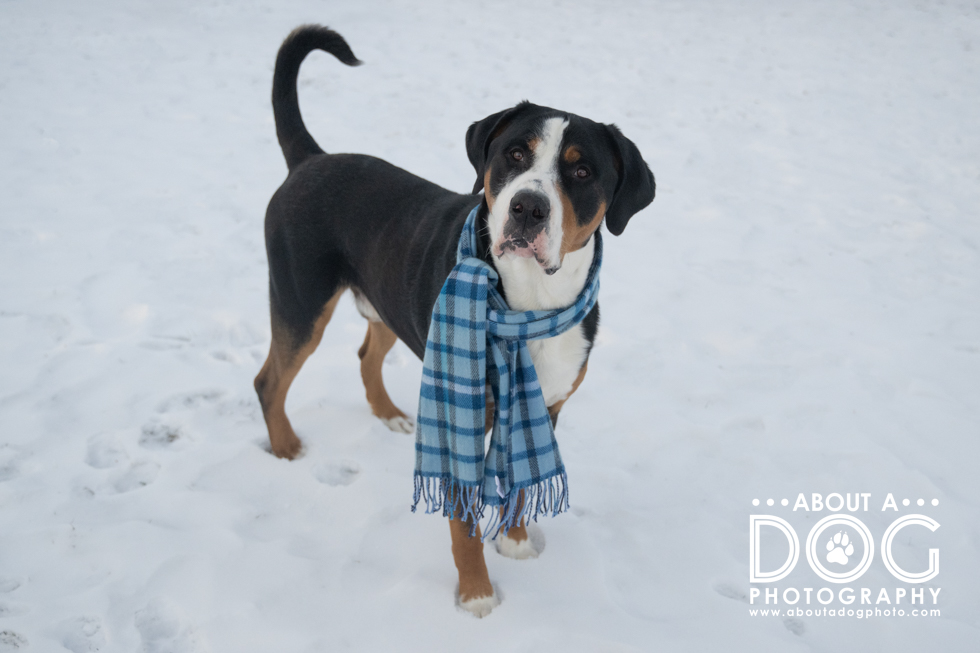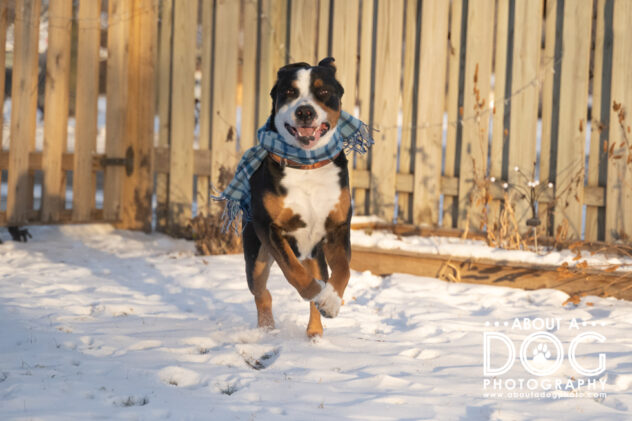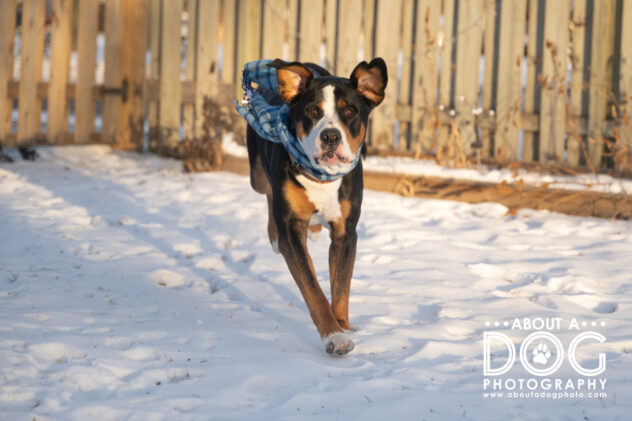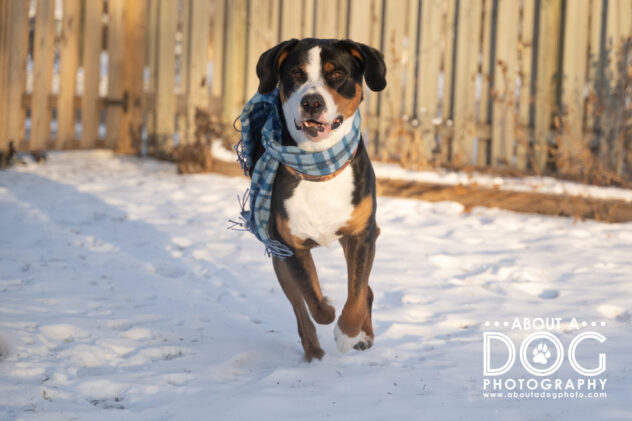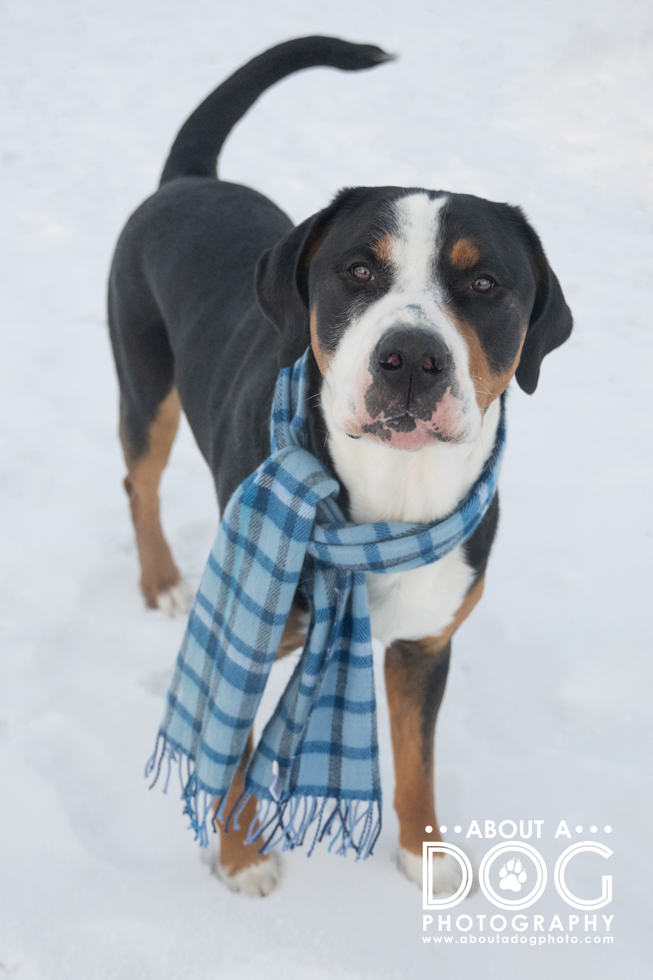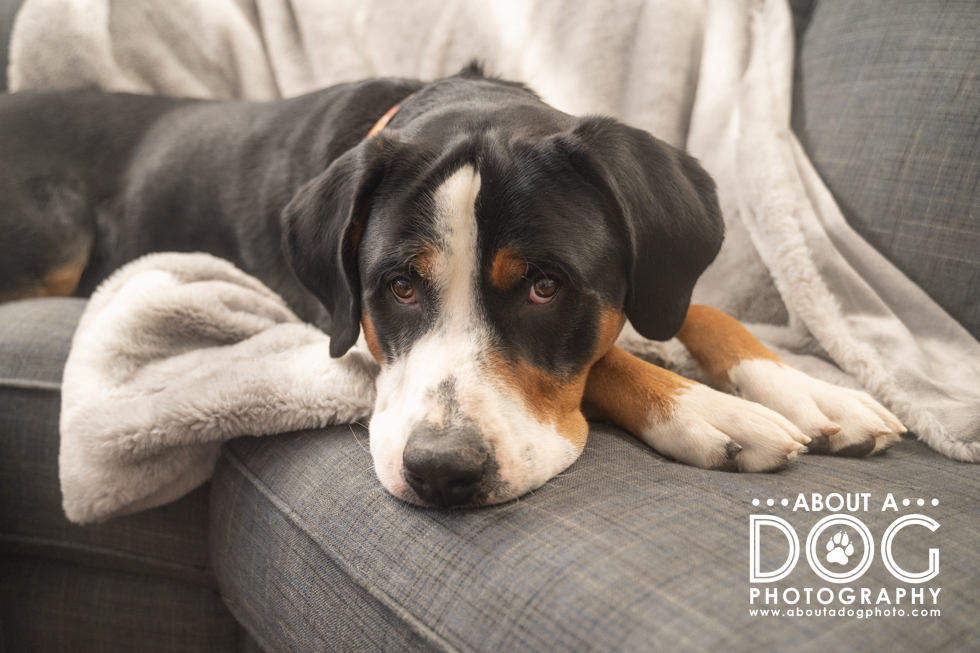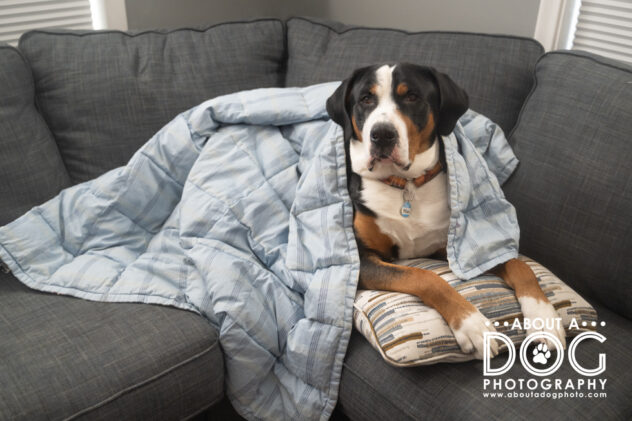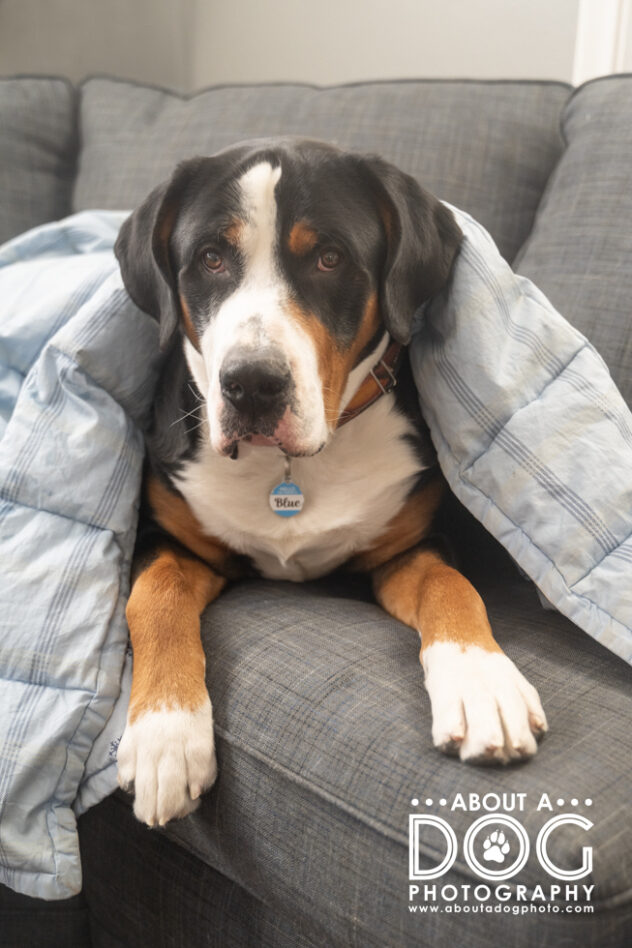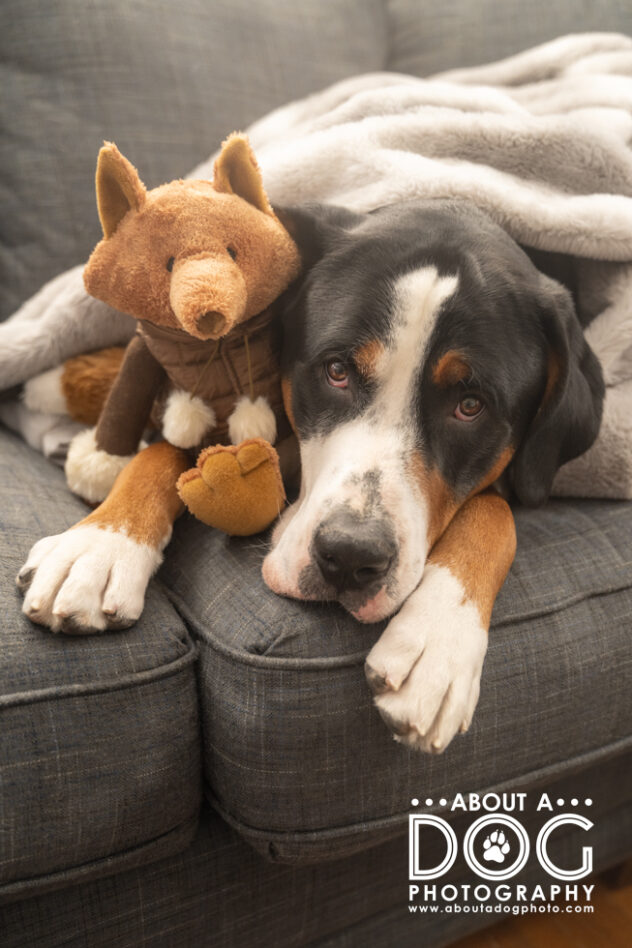Fluffy blueberry pancakes for dogs!
Today (January 28th) is National Blueberry Pancake Day! What better way than to celebrate with fluffy blueberry pancakes? (Aside from waffles haha) There is no better way to celebrate! And why not craft some fluffy blueberry pancakes for your dog too!
Ok, your first question is… can dogs have pancakes?
Heck yes they can! Moderation is key to pancakes along with any bakery style treat like cupcakes, cakes, breads, doughnuts and waffles. The more sugar and fats in the treat, the less dogs should eat. With pancakes, small dogs can have a small pancake or two (quarter to half dollar size) while bigger dogs can have a bigger portion. Big dogs like Blue can have a couple of “regular” human sized pancakes, I’d say no more than 2 or 3.

The ingredients – what dogs can and can’t have!!
This recipe is modified from the 1950 Betty Crocker cookbook (our current favorite for human pancakes).
We will need: egg, buttermilk, baking soda, flour, sugar, soft shortening, baking powder and salt. For the modification, the flour will be oat flour, the buttermilk will be a sour oat milk, and the sugar will be omitted.
Baking soda & baking powder aren’t good for your dog if they just eat them in their powdered form or get ahold of the box or container. Luckily since we are baking/cooking the batter the baking soda & baking powder become inert and non active. (Baking soda & baking powder are a main reason why these pancakes end up rather fluffy!)
Shortening is… margarine, lard or vegetable shortening (or any fat that is a solid at room temperature). Butter and coconut oil aren’t shortening though they can be used interchangeably with shortening. Butter melts when baked/cooked and gives the final product a buttery taste. Coconut oil will add coconut flavor to the finished product.
When it comes to shortening, dogs can have it though is best to NOT allow your dog to dip right out of the Crisco tub. Fatty shortenings can cause tummy upset and pancreatitis in dogs, so moderation is key! Used in a baked/cooked item like pancakes the shortening will be less tummy upsetting as it is combined with other ingredients and cooked. If you’re solidly worried about it, opt for coconut oil. We will be using shortening.
Why oat flour?
All purpose flour is… basic. Typically bleached, this flour is usually a staple in the kitchen, though nutritionally they are quite low. If that’s all you have on hand, go ahead and use it! Otherwise you can use almond flour, brown rice flour, buckwheat flour, chickpea flour, coconut flour, oat flour or whole wheat flour.
I opted for oat flour because Blue’s favorite limited ingredient treats use… oat flour! Bocce’s Bakery makes unique flavored, limited ingredient dog treats – either crunchy or soft – and Blue LOVES them! Plus they are limited ingredient, which means I don’t feel bad feeding Blue an ample amount of them. Find them at Petsmart, Petco, Home Goods, Target or online!
Oat flour is relatively healthy as well! It has ample dietary fiber, protein, healthy fats and low in carbohydrates compare to other flours!
Onward to the recipe!
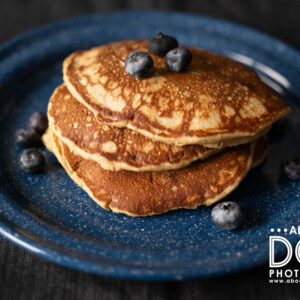
Fluffy Blueberry Pancakes for Dogs
Ingredients
Heat Griddle slowly while mixing batter.
Beat well:
- 1 egg, room temp
Beat in:
- 1 1/4 cups oat milk, soured *
- 1/2 tsp baking soda
Then beat in:
- 1 1/3 + 3/4 of 1/3 cups oat flour (we used Quaker oat flour) *
- 2 tbsp soft shortening *
- 1 tsp baking powder
- 1/2 tsp salt
Lastly, fold in carefully:
- 1/2 cup fresh or frozen blueberries
Instructions
- Beat with a rotary beater until smooth.
To "bake":
- Heat griddle while mixing batter. To test, sprinkle with drops of water. If bubbles "skitter around" heat is just right, and cakes with brown immediately.
- Pour batter from tip of a large spoon or from pitcher, in pools a little apart (for perfectly round cakes). If it is necessary, grease griddle very lightly.
- Turn pancakes as soon as they are puffed and full of bubbles, but BEFORE they break... important for light cakes. Turn and brown the other side. FYI: A thick batter makes thick cakes and a thin batter makes thin cakes.
Notes
- For sour milk, add 1 TBL vinegar or lemon juice to 1 cup milk (works with non dairy milk as well!). Let it sit a minimum of 5 minutes (oat milk takes a little longer to thicken and "sour").
- Sub milk with:
- oat milk
- coconut milk
- almond milk
For toppings for your dog, you can do a small dollop of whipped cream or a handful of fresh blueberries scattered on the top or even a smear of peanut butter. If you want to drizzle maple syrup, you can just use moderation. Same goes for honey!
NOTE: let the blueberry pancakes cool well before you give them to your dog! Those little blueberries turn into molten lava when cooked which could burn or irritate your dog's tongue!
Ooooo soooo yummy!

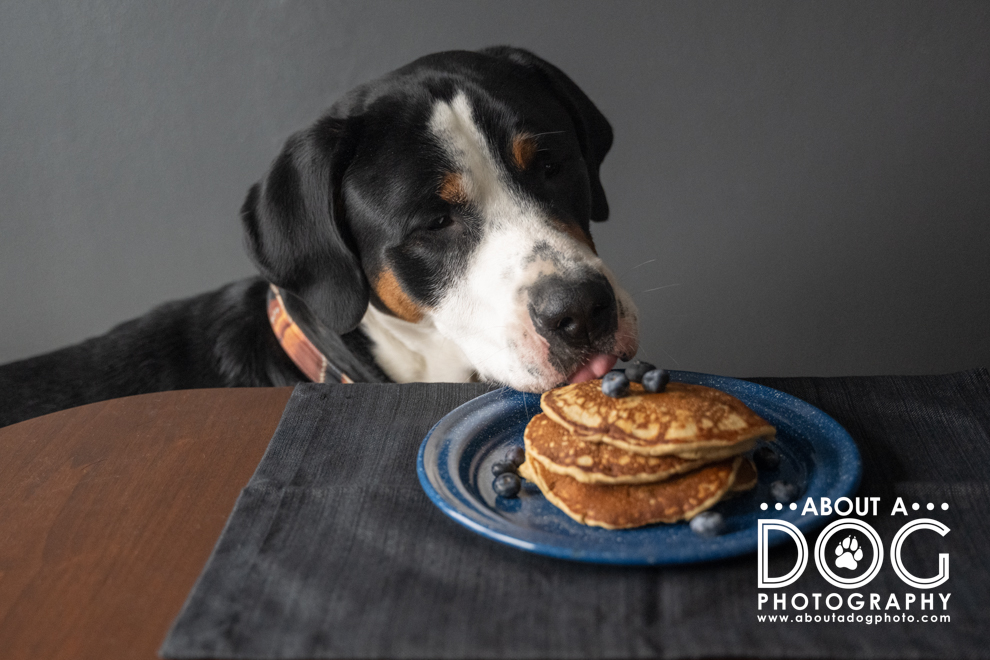
Blue rather enjoyed his fluffy blueberry pancakes! No, he’s not sitting on a chair or stool, he’s table height! He’s just tall enough that he can put his head on the table and let his tongue attempt to snack off plates. He tries to be sneaky, but he’s typically thwarted quickly. Usually he just watches and drools while we eat haha!
Celebrate National Blueberry Pancake Day by making these fluffy blueberry pancakes for your dog!
Fluffy blueberry pancakes for dogs! Read More »



